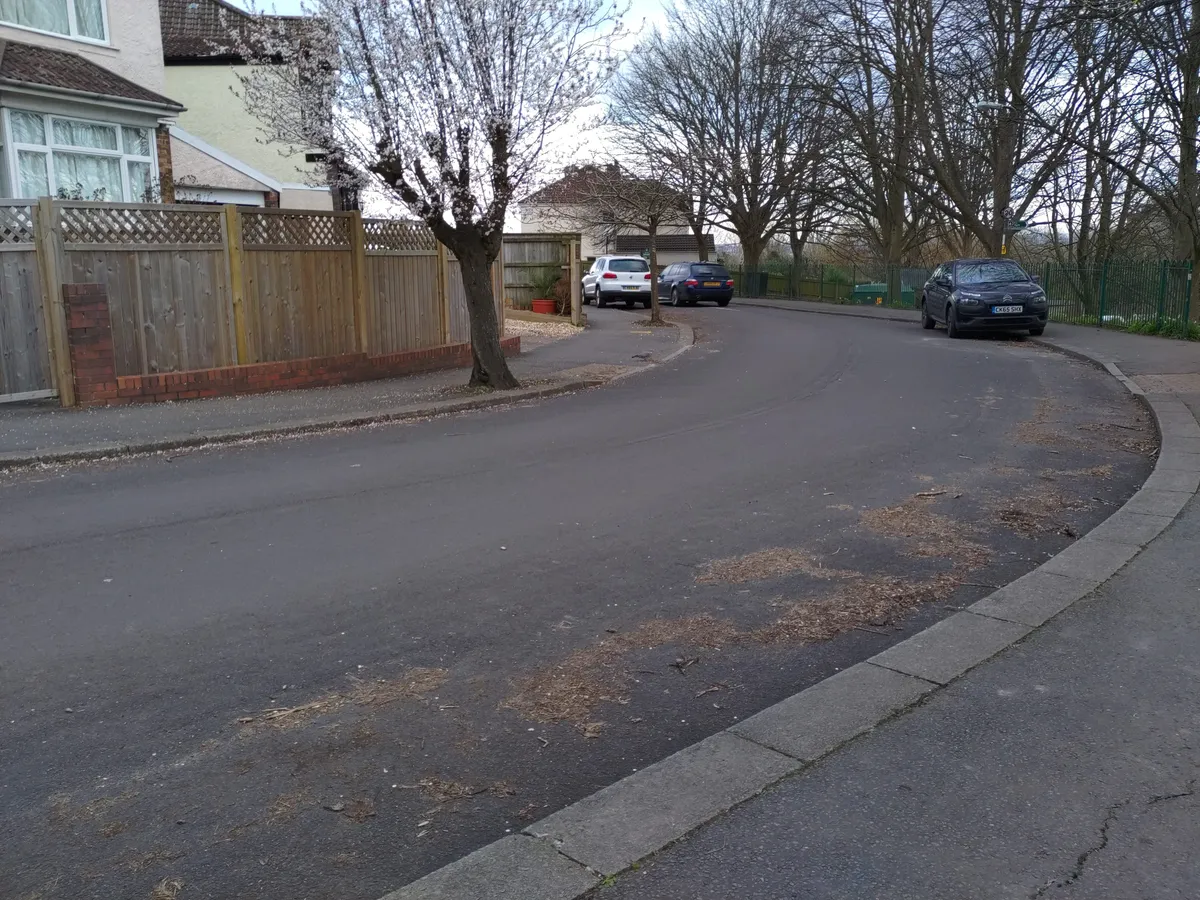SQUIRREL_13075357
Fairphone has a long history now of producing eco-friendly smartphones, arguably the most eco-conscious by quite a way in fact. However, in pursuit of a smaller carbon footprint, its devices often fall short of its competitors.
And yet, with the Fairphone 4, a balance seems to have been struck, offering a sustainable smartphone that requires very few sacrifices compared to its towering Android competitors like Samsung, Google and OnePlus.
Of course, the Fairphone 4 is by no means perfect and for some, there will be a few areas that can’t be overlooked in exchange for a more sustainable handset.
Environmental impact and sustainability
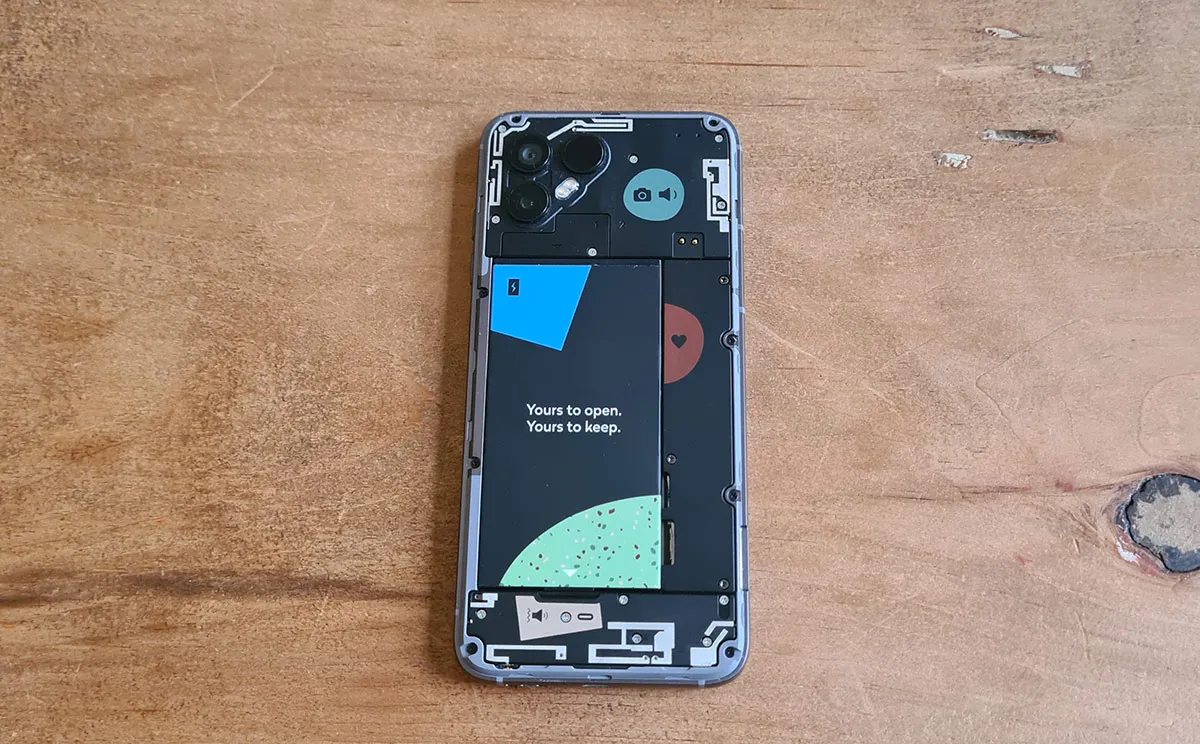
Delving deep into the environmental impact seems like a weird way to start a review of a smartphone, and yet for the Fairphone 4 it is the obvious place to begin.
That’s because with this device (and all of Fairphone’s other handsets), the emphasis is put on being a more eco-friendly option. This is achieved through a few key changes, but mostly thanks to its modular design.
While most brands these days completely seal off the back of smartphones, Fairphone gives you complete access. Not only that, but it even encourages you to mess around back there, offering a screwdriver in the box to dig around and pull parts out.
This means you can replace the battery, both the rear and front cameras, the earpiece, speaker, display and, well… pretty much every single part of the phone. Fairphone also offers all of these parts on their website (for a price obviously). The device is also covered by a five year warranty.
Additionally, Fairphone makes a lot of claims around the sustainability of the parts it uses. Old devices that are returned are stripped and reused for materials, and normally environmentally damaging parts are produced as often as possible from sustainable sources. This includes the tin, copper, gold, lithium, tungsten and plastic.
Design
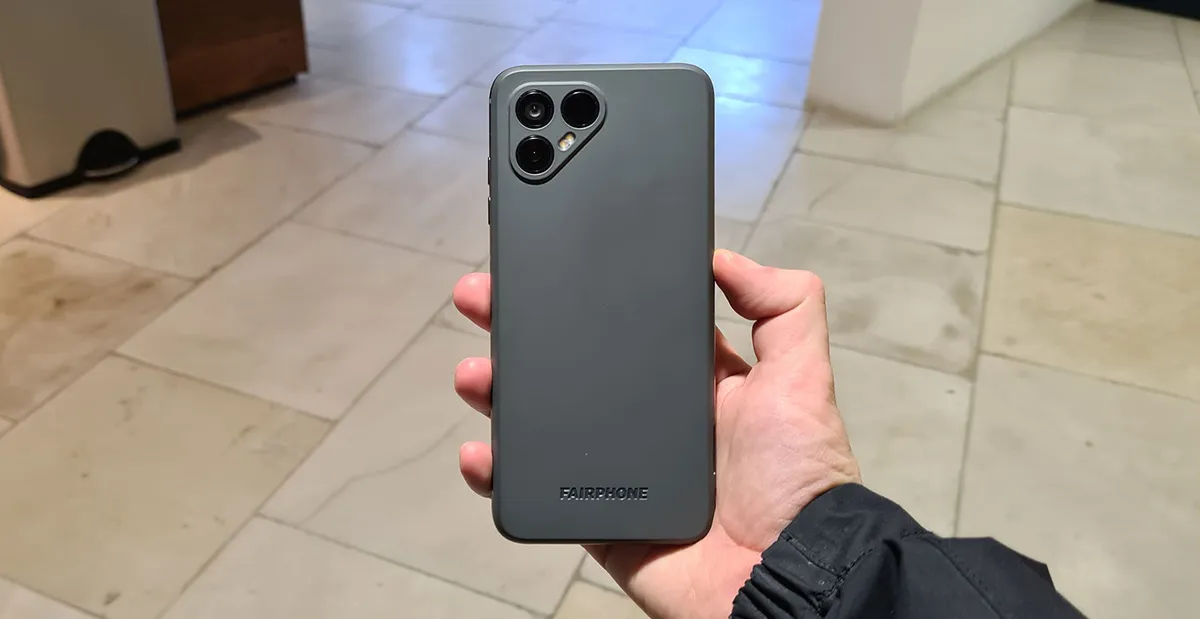
Everything about the Fairphone 4 puts it firmly in the mid-range market alongside Samsung’s latest A series handsets, OnePlus’ Nord devices or the Poco F3.
The back of the Fairphone 4 is made up of 100 per cent recycled plastics. That gives the device a feel of being sturdy and capable of a few bumps here and there, while still offering a good grip without fear of the phone sliding out of your hand.
In fact, over time I actually started to really like the plastic feel. While it doesn’t offer the same high-quality luxury as the glass backs usually used on smartphones these days, it took away the constant fear that makes me slam a case on a smartphone the second I get it.
That paired with the metal frame makes this feel like a phone that will last, but it does add on a decent bit of thickness and weight (225g to be exact). While it’s not uncomfortable, this might be off putting for those with smaller hands.
The Fairphone 4 does feature a fingerprint scanner but unlike more premium devices, it isn’t under the display but instead on the side. While I found it to be very responsive most of the time, the location felt quite awkward, requiring a shuffle of the hand or a big stretch to reach it.
It will be no surprise to hear that, like the vast majority of new smartphones, there is no 3.55m headphone jack. Instead, the USB-C port can double up as a charging point and headphone point with an adaptor.
Display
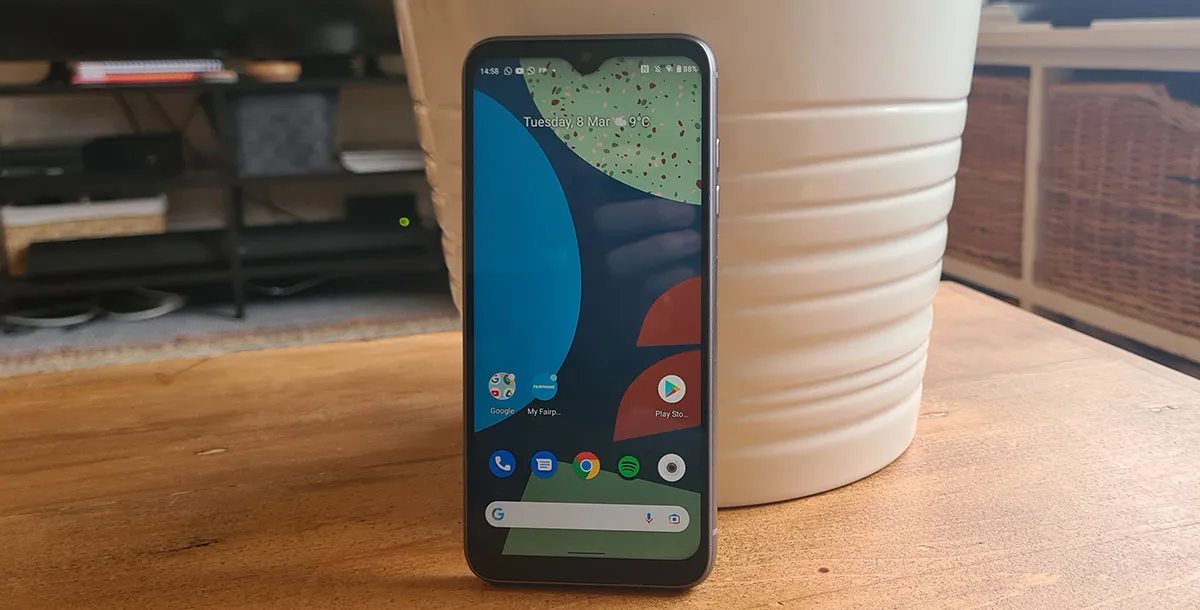
The display on the Fairphone 4 is yet another sign of this device’s mid-range offering. It’s a good size at 6.3-inches and has a resolution of 1080 x 2340 – roughly the same you’d get with most devices out there, excluding a few top-end handsets.
Unlike most smartphones out right now, the Fairphone 4 does feature some quite large bezels, and a tear drop camera instead of the punch hole style Samsung has opted for. You’ll also find yourself capped at a 60Hz refresh rate compared to the more common 90 or 120 that we're seeing these days.
That affects how quickly the screen can react to your actions, making scrolls and animations seem more fluid the higher the number is. It wasn’t something we noticed much with the Fairphon, or in fact a major issue on most 60Hz refresh rate phones.
Unlike a lot of other handsets in this price range, the Fairphone 4 opts for an LCD display (compared to the usual brighter OLED), something usually saved for budget smartphones. That means colours aren’t quite as vibrant as you would see on more premium competitors. However, the screen was clearly visible in bright sunlight, the brightness just needed a tweak to the higher-end most of the time, even in the dull weather of England.
Features
Overall, I was impressed with the features of the Fairphone 4. Battery-wise, I was consistently getting a full day of heavy usage with just one charge over night. With a 3,905mAh battery, this isn’t a huge surprise. It’s also nice to know that if you do ever start to see the battery life fall, you can simply replace it yourself.
When you unbox the phone, you will notice that no charging cable or block is included. To reduce e-waste, Fairphone has skipped these features expecting most customers will already have one.
This is by no means a surprise, especially with Fairphone’s environmentally-friendly approach. It is also only one step further than both Apple and Samsung who no longer include plugs with their handsets.
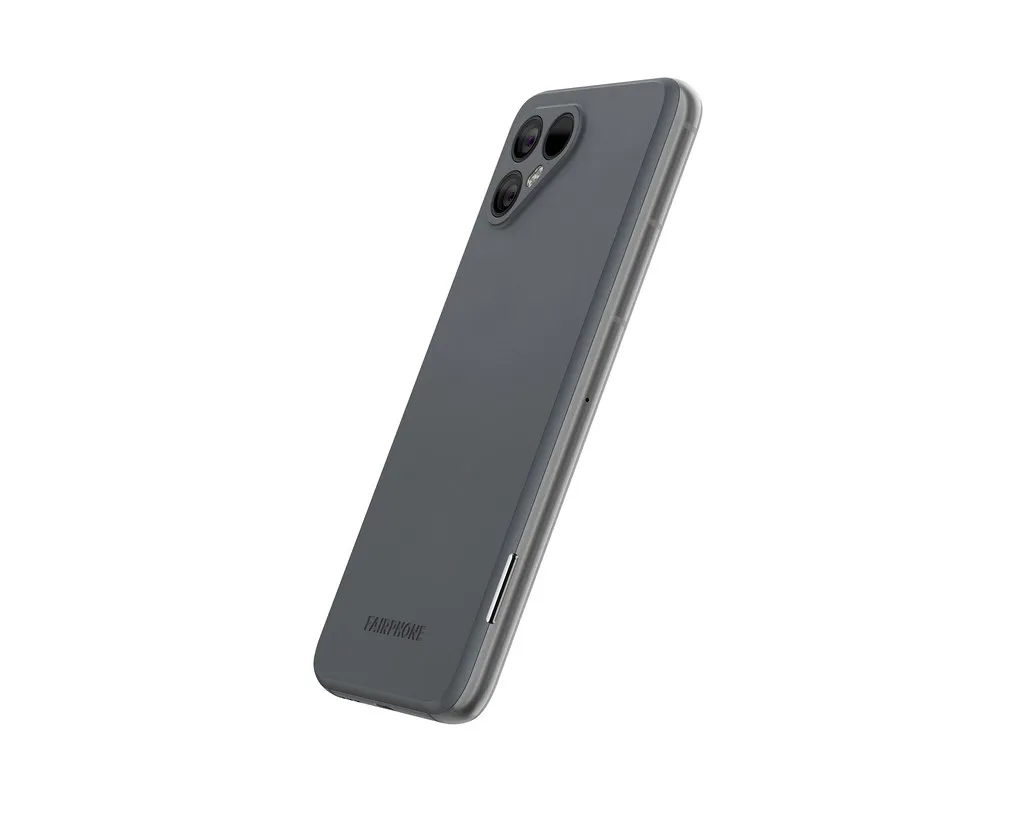
While the Fairphone 4 does offer fast charging, it skips out on wireless charging – a feature normally seen in more premium handsets.
The speakers were absolutely fine but by no means impressive. There was a slight tinny sound that had me reaching for headphones when watching a show or long video. It is worth noting however that a lot of other reviewers didn’t report any major speaker issues.
While you can get the device in a 128GB or 256GB storage, as part of this device’s customisability, it’s nice to see the inclusion of a MicroSD slot as well – a feature that a lot of phone brands are annoyingly getting rid of these days. Another nice, but realistically expected, feature is the inclusion of 5G - the first time Fairphone has included it.
Power
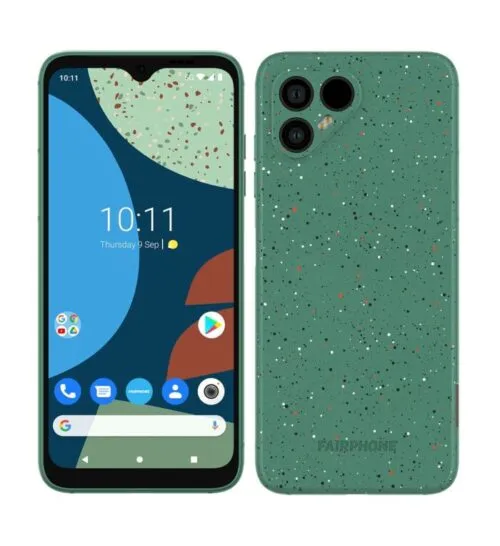
The Fairphone 4 uses the Snapdragon 750G chipset – a common option in smartphones around this price point. When we put the device through a test on Geekbench (software that tests processing power), it popped out a multi-score of 1,848.
That puts it in a similar level of power as the Huawei P40 Lite, more than the iPhone 8 and a similar level to Samsung’s Galaxy A52. Compare it to Samsung’s Galaxy S21 Ultra (one of the most powerful smartphones around) at a score of 3,068 and you’ll see it falls in quite a comfortable position for the price.
Overall, the performance we got from the Fairphone 4 was consistently good. Load-times were short for most daily apps with the occasional lag when opening something a bit more intensive.
In terms of gaming, while dominating the world on 8 Ball Pool, there were absolutely no problems. When I stepped things up to Asphalt 9, there was some noticeable lag… obviously the reason my winning streak didn’t continue.
For most people who aren’t big mobile gamers or using intensive software, the Fairphone 4 is perfectly up to the usual tasks you’ll be performing.
Cameras
Arguably, the biggest let-down with the Fairphone 4 is the cameras. On paper, the specs look solid. It has a 48MP main camera with an f/1.6 aperture and a second ultra-wide lens, also 48MP but with a f/2.2 aperature.
However, whether it was sunny, raining or in a brightly-lit room, most photos I took came out dull and lacking colour. The actual quality was good out in the big wide world but shots were occasionally blurry inside.
Considering there was often a moment of lag after taking a photo, I assumed AI post-processing was putting in hard work like Google's Pixel devices or Samsung's S series handsets to brighten it up, but as far as I could tell that wasn't the case.
My other grievance with the camera was when I'd switch to the 25MP f/2.2 selfie lens. Photos I took of myself would often come out with a smudged background, especially around my hair. I even got a few friends to take some selfies with it too, making sure it wasn't just genetics and me not being photogenic getting in the way.
Verdict
Relatively affordable, very environmentally friendly, and a major improvement on its last handset, the Fairphone 4 is a solid all-round pick for a mid-range handset. It is also the clear choice right now for anyone after a sustainable handset that will last through the falls, accidental drops and years of usage.
A lower refresh rate, weaker processor, big bezels and the use of an LCD display are features that those who are coming from a premium smartphone might be put off by, but the only major mark on the Fairphone 4’s otherwise solid performance is the camera.
While it will still allow you to pull off some great shots out in the wild, they lack the pop of colour that its competitors achieve and can seem slightly dull. The selfie camera suffers even more, especially when it's dark.
If you’re not trying to win any awards with your camera though, the Fairphone 4 is a hard smartphone to criticise, especially considering both its price point and small carbon footprint.
SQUIRREL_13075357
Alternatives
Google Pixel 6
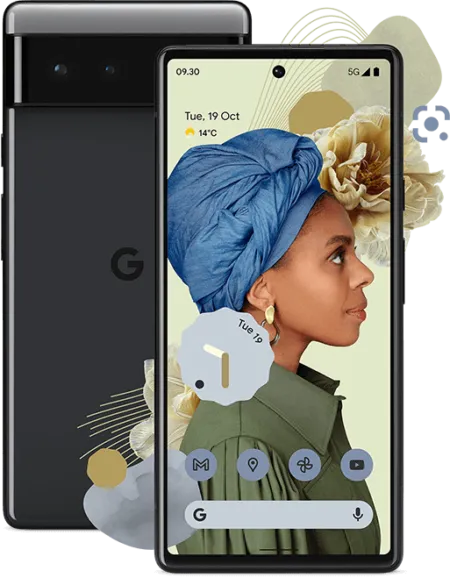
The Google Pixel 6 is another smartphone that has put some effort into its sustainability. Google has made claims that the housing of the device is made from 100 per cent recycled material, and Google will recycle your phone free of charge when you're done with it.
While the Google Pixel 6 is pricier than the Fairphone 4, it features a stronger camera performance, better display and stronger processor. Of course, you are missing out on the modular design of the Fairphone and won't be able to change parts.
SQUIRREL_TEXT_13075361
OnePlus Nord 2
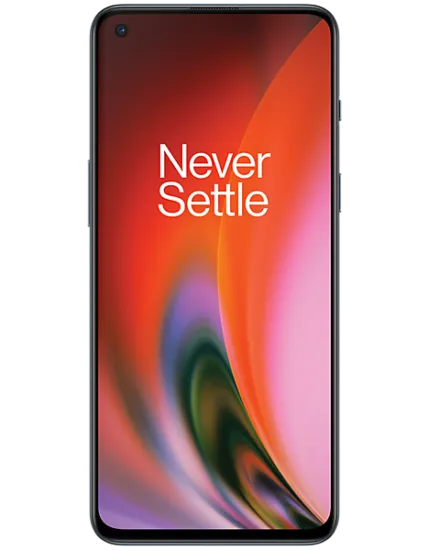
For the specs and features on offer, the OnePlus Nord 2 is surprisingly affordable. It offers a good overall camera experience, truly impressive fast charging and a great processor. However, unlike the Fairphone there is no IP rating (how well it deals with dust and water) and again, no modular design for changing parts.
SQUIRREL_TEXT_13075364
Samsung Galaxy A52
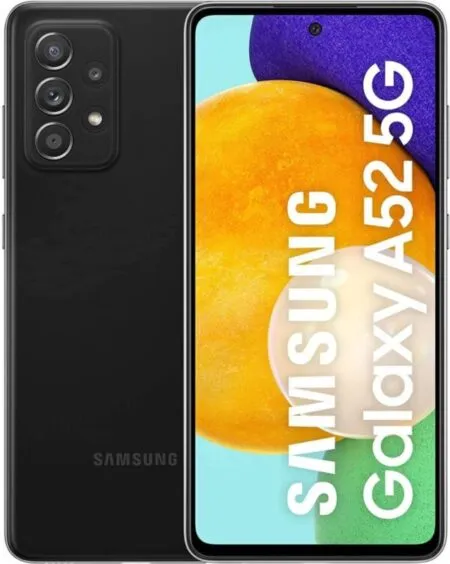
The Samsung Galaxy A52 is another affordable handset, coming in slightly cheaper than the Fairphone 4. While it lacks the same environmental considerations of Fairphone or even the Google Pixel 6 above, it packs a lot of features into its price tag.
Most noticeably is the inclusion of a surprisingly high-quality display, large battery and a solid build. However, in exchange for the lower price, you get an average amount of power and, while there are a lot of cameras, they offer an average performance.
SQUIRREL_TEXT_13075365
Read more:
